These days, when you think of “store brand” watches or “department store” watches, you may think of the types of timepieces that are commonly sprawled across vast floor displays, sloppily pawed through and left half unboxed on pylons, and showcased alongside inexpensive costume jewelry in long glass cases in stores like Macy’s, Kohl’s, Target, even Walmart. Whether you are a very well-intentioned and un-snobby snob (even the best of the #WatchFam have our knives out, just a little bit) or a non-watch-venturer, you’d likely recognize the brands if they were mentioned to you. You know some of these. Michael Kors, Nixon, MVMT, and that one brand that shall remain nameless (You know which one. Named after some likely-fabricated man of the world. You know. It shares its surname with a beef dish that Gordon Ramsay hates seeing undercooked.) To the unacquainted, even Timex and Casio might make the list of recognizable “store brands.”
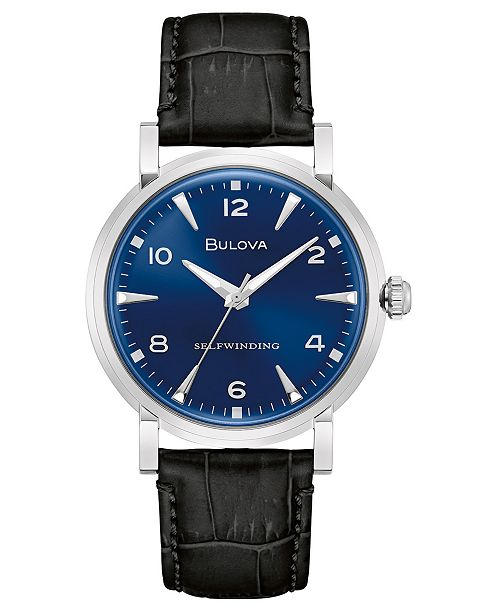
What these brands have in common (and which I assert Timex and Casio do not) is form over function, fashion rather than quality, looks versus provenance. I argue that Timex and Casio don’t fall under this category because of the history of the former and the contributions to horology of the latter (though Timex has had its own breakthroughs). As a matter of fact, what’s great about Timex and Casio is that you can still walk into any department store and find a reasonable selection of each, two more than respectable brands with interesting backstories, for a reasonable price. How many other respectable brands are so accessible to the vast majority of people who walk through the door? You might not find the most exciting or established models of either of these brands when you walk into Target, but you can leave twenty or thirty dollars poorer with a handsome new timepiece that can likely “take a lickin’.”
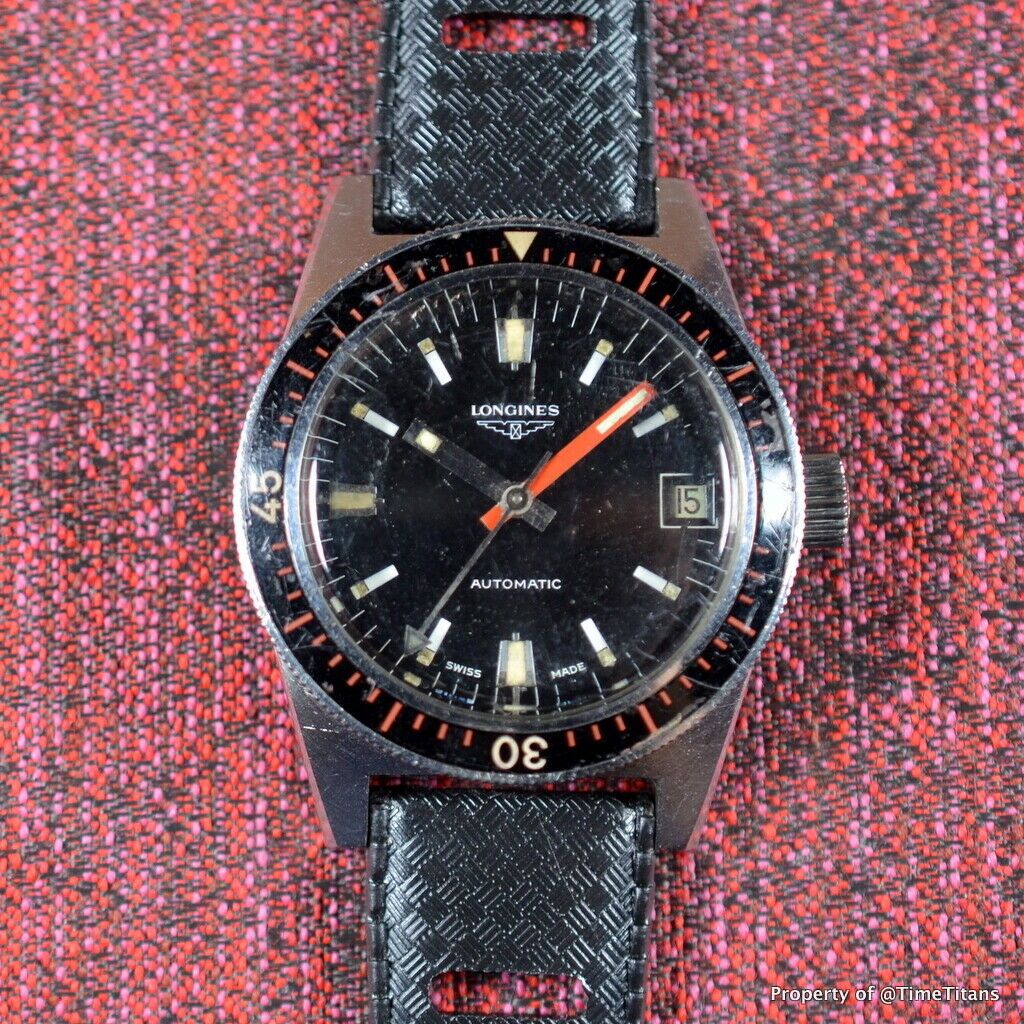
The so-called “fashion brands” seem to get the job done for most people most of the time. It’s really those who are into this hobby that quibble and squabble about quality, country of manufacture, brand history, etc., etc. To most folks there are probably three questions that are important to be answered in the affirmative:
1.) Does it tell time?
2.) Will the battery last a long time before I have to change it?
3.) Does it look cool?
Really, should we expect much more than this from the selection of watches at a catch-all department store? I, for one, think it’s a reasonable expectation and find it a great privilege that, even in the most commercial of commercial, non-boutique, non-watch-centered establishments (brick and mortar or online) I can still walk in (or log on) and find a Timex or a Casio (or even a Seiko!), watches that we obsessives consider solid any day, any time.
But what era of store watches are we in currently and is it anything like it once was? Perhaps looking a bit at some of the histories of store brands will give the reader an idea of the state of affairs today and how we’ve gotten here.
Sears
My interest in store-branded watches started when I was on a hunt for vintage skin divers online. There’s something about skin divers. Sure, they don’t have the water-resistance or depth rating (especially vintage ones!) of traditional deep dive watches but, man, they’re just so cool (and it doesn’t hurt to have a diver that fits under your cuff). After poking around eBay and getting the lay of the land, you start to familiarize yourself with watches from certain brands that come up for sale often. On one side of the spectrum, you have pieces like the Universal Geneve Polerouter Sub (:drool:) and vintage Longines divers: gorgeous, but out of the broke watch snob’s price range.
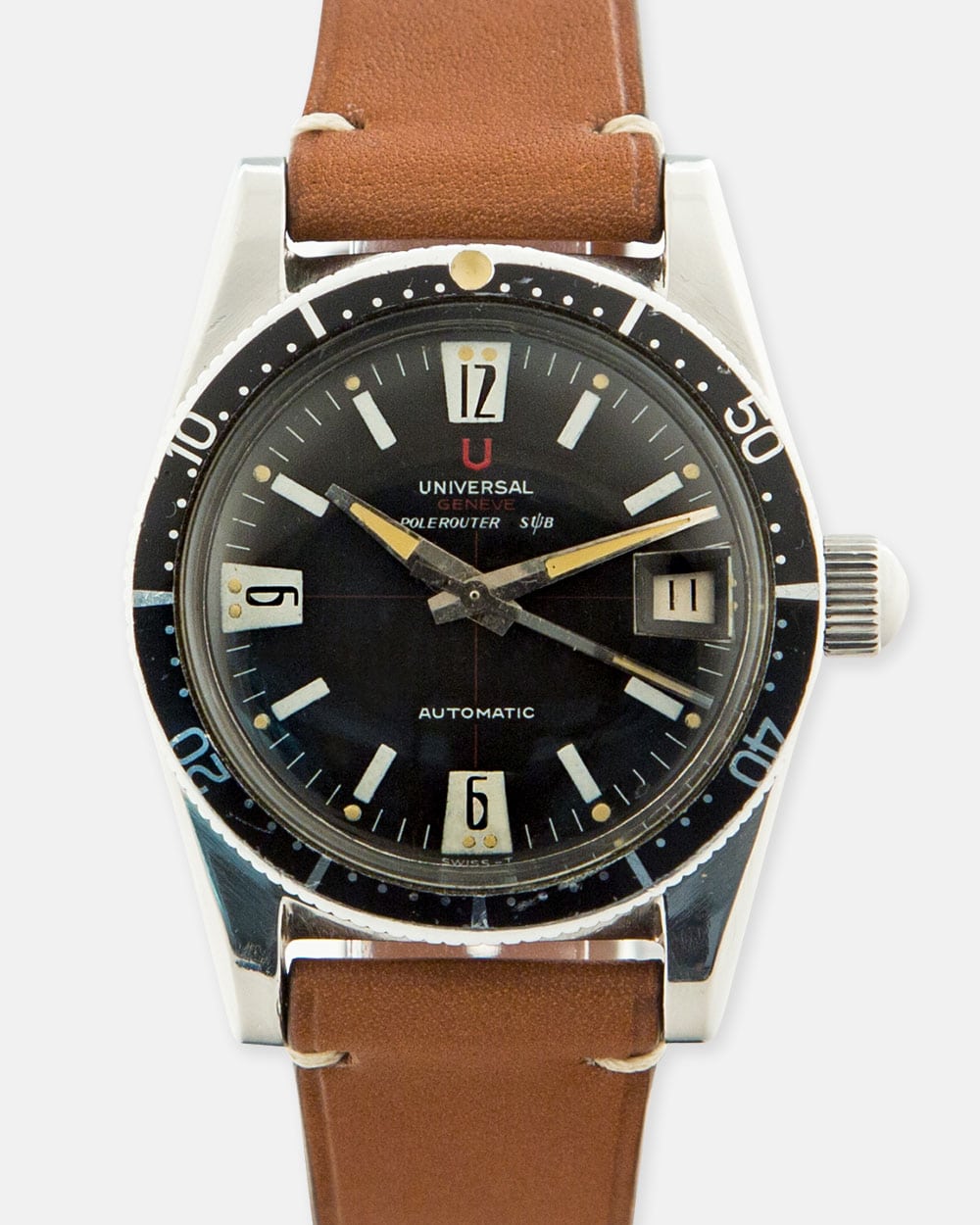
Then, there are innumerable less recognizable and completely no-name brands that come up even more often, brands like Douglas (a sister brand of Wolbrook), Helbros, LeJour, Jenny and, of course, Tradition. Sears carried most of the important American watch brands (Bulova, Hamilton, Elgin, and Gruen specifically) from at least the 1940’s onward and, while there were other Sears-specific store watches sold during the same period such as Tower and Cortebert, it’s impossible to cover all the different models in one article and give them due diligence. Since I started with divers, I’m going to stay with those for Sears in the interest of brevity.
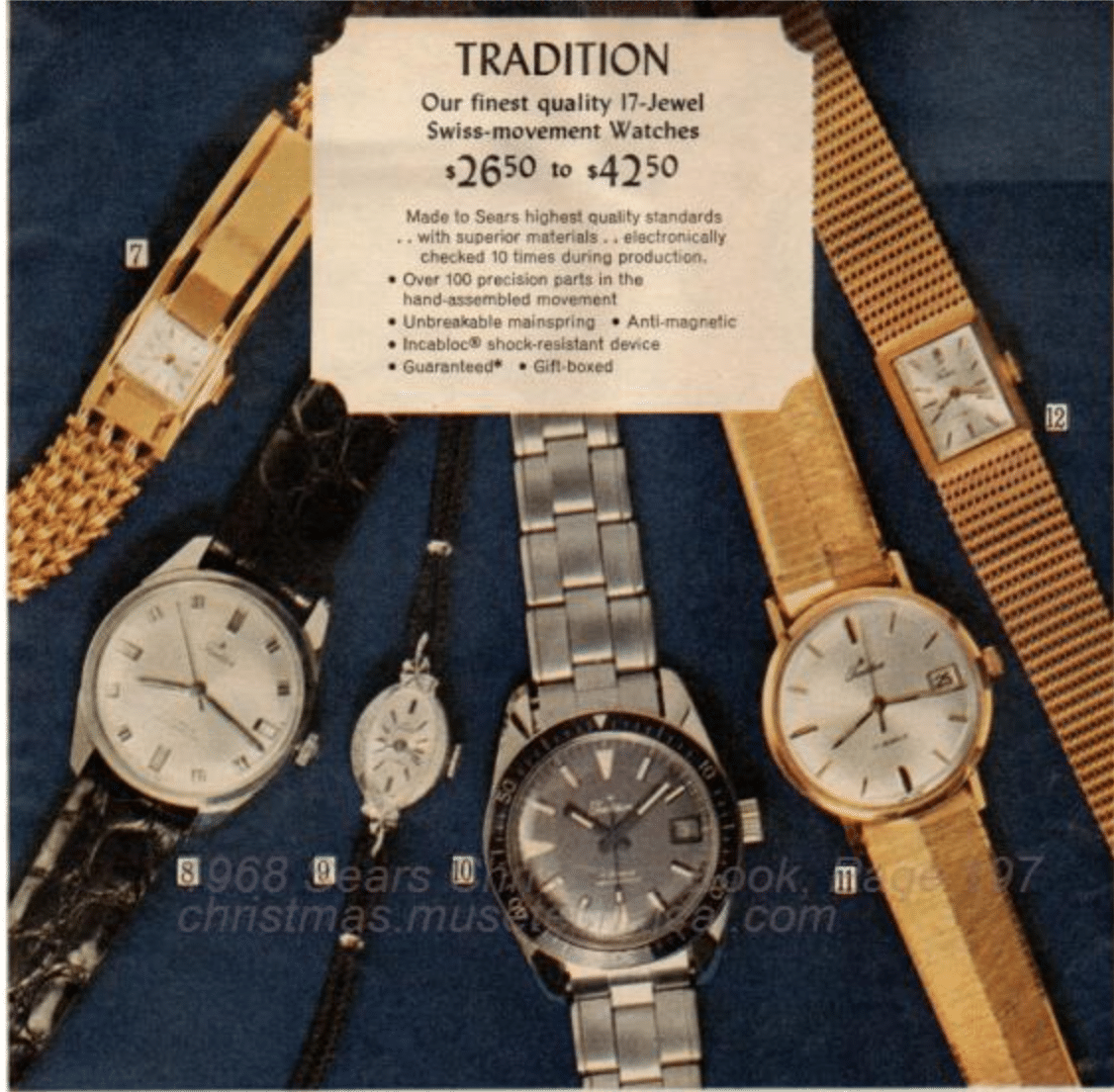
Sears began selling Tradition dress watches, for both men and women, starting around the mid-1950s. It wasn’t until the 1960s that Tradition started making dive watches, I assume to follow the tool watch trend started by houses like Blancpain and Rolex. Tradition divers, though less expensive than several of their contemporaries, shared much of the same DNA that makes a skin diver a skin diver: rotating friction bezel, slim case profile, straight lugs, and a tropic or other rubber dive strap.

Many of the early Tradition divers were mechanical and came with readily available and reliable hand-wind movements from makers such as A. Schild, S.A., one of the most prolific movement manufactures of the late nineteenth and early twentieth century.
Tradition watches were branded as such on their dials, often black or an alluring slate gray, but movements were, interestingly, co-branded A. Schild (or “AS”) and “Sears Roebuck Co.” To the best of my knowledge, Tradition was seen as a higher-end store brand for Sears, hence the separate name/branding. However, one need only look under the caseback to see the imprint of one of the most ubiquitous department stores/catalog companies of the era. The same was true of another Sears brand, Orvin, who made both dress watches and divers (another imprint that it would be counterintuitive to delve into here for the sake of length). So, buying from a catalog or walking into a brick and mortar Sears store, one could choose from a small variety of Sears Roebuck-branded watches with reliable Swiss-made movements (think of A. Schild as the original ETA) at an affordable price. Quite a difference from the cheaply-produced and imported store watches one might find at Sears (or on their website) today.
Of course, as quality for a reasonable price went the way of the buffalo, Sears began to introduce not only quartz versions of Tradition divers, but the 1970s also saw the beginning of Sears-branded (that is, “Sears” on the dial) dive and sport watches that started with Swiss-made parts and ended with cheaper, Japanese-made, 7 jewel movements. These watches were definitely a step down in quality from their 1960’s predecessors. However, they are still neat finds that ooze the vibe of a particular moment in store-brand horology and they can be found for relatively cheap. One particular Sears-brand diver (this one with a Swiss movement) seems to have a case inspired by a Submariner or a Fifty Fathoms more than a Tradition skin diver. Sure, it’s cheap and made for the average customer, but as time passes some of these design attributes have only grown in kitsch and charm.
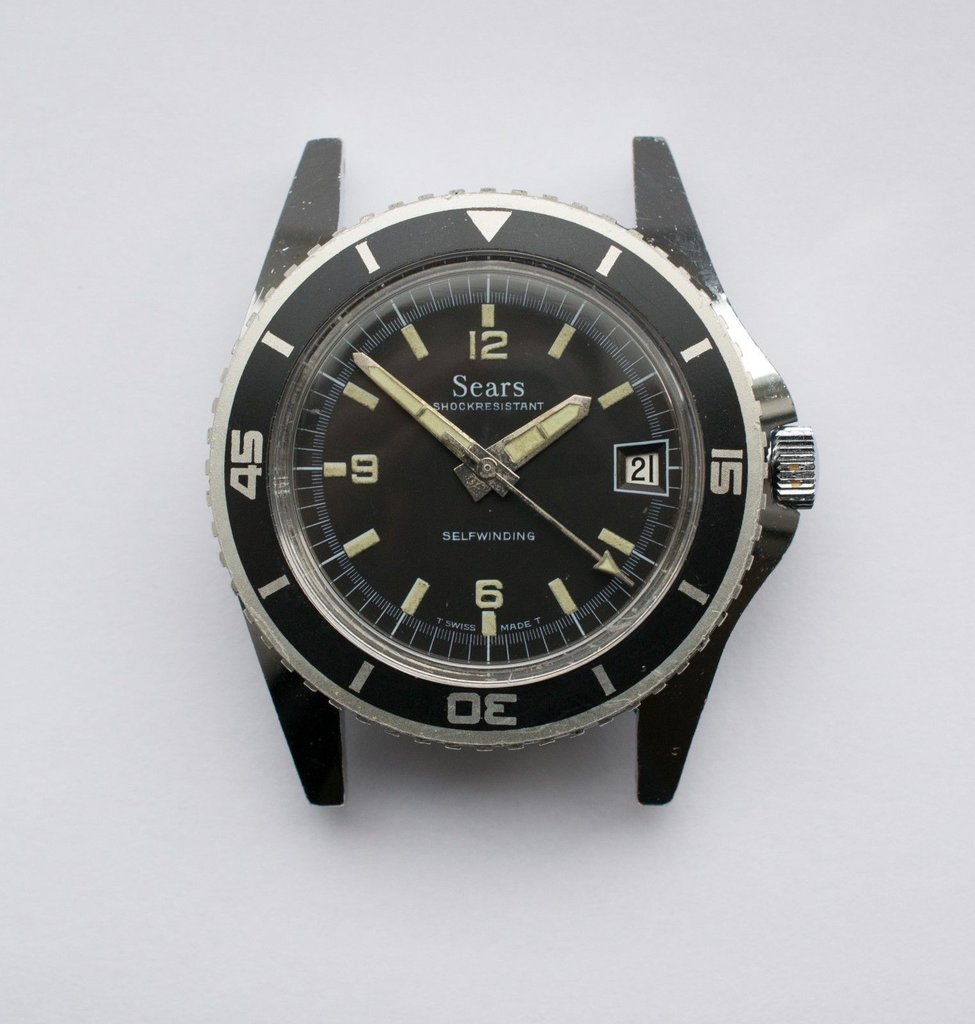
Montgomery Ward
As I mentioned earlier, I am consistently on the hunt for vintage skin divers, particularly those with great looks, respectable movements, and mysterious provenance. Case in point, the first vintage skin diver I picked up is branded “Most.” It has a gray sunburst dial (that kinda looks like a vinyl record), indices which are longer than the 12, 6, 9 numerals (all covered in puffy lume), and “T Swiss Made T” at 6 o’clock. Before I even opened this puppy up I could tell the movement was nothing to write home about because of the dial text that says “Lifetime Mainspring.” That’s usually code for, “Don’t even think about sneezing on this watch. It can’t take it.” Lo and behold, it’s got some little clunker of a 1-jewel something or other under the hood. It ticks so loudly it puts Timex Weekenders to shame and I usually have to turn it to the inside of my wrist in a quiet room. It also stops and needs a shake or flick to get the second hand moving again. But it has a weird pseudo-Milsub vibe, parts that don’t necessarily add up to a cohesive whole, a brand marking I’ve never seen, and I think I paid like $40 for it. I’ll take the eccentricities in return for how neat the little bugger is.
Searching for vintage skin divers in this price point, I’m looking for aesthetics first, condition second, and movement third. There are a lot of awesome results (including some great Sears divers) that I’ve had to pass on because of varying degrees of corrosion to the case or insides (not patina, corrosion). Then, during one random search of newly listed watches, I came across a real find. It was a skin diver that looked to be in great condition. It had a 12, 6, 9 dial with a date window, perfectly creamy lume (including the triangle pip at noon) and, perhaps the best feature, a lovely broad arrow hour hand. Immediately, I got images of two gorgeous though expensive watches, the Omega Railmaster and the vintage Seamaster 300 (both of which were reissued as part of the 1957 “trilogy”; I also thought of another, more obscure, Omega, the Ranchero). The name on the dial was LeGant (which I wasn’t sure to interpret as “the gant” or a clever midcentury pun like “L-E gant”) and it had one of my other favorite vintage watch words, “incabloc.”
As with any purchase, even ones that wouldn’t set me back too much, I did some background research. The watch looked great and the seller mentioned that they had it serviced recently but you can never be too careful. Different from the kind of research I’d do if, say, buying a pair of wireless headphones from an established manufacturer, the research for watches like this usually starts with one question: Can I find another example of this brand or this particular watch? In the case of my Most diver, I could not. However, I found images of this watch right away on Instagram and Google and soon found out that LeGant, like Tradition, was a brand made for a department store/mail-order company, this time Montgomery Ward.
I’m too young to remember Montgomery Ward as a department store but, from what I’ve read, it was akin to Sears or JC Penney. They simultaneously had a mail-order catalog and, in its current incarnation as Wards, it is exclusively an online/mail-order company. I went back to the eBay listing for the watch to ask the seller for a movement picture and, when he added one, saw that the movement, a clean as a whistle 17 jewel hand wind, was co-branded “Montgomery Ward” and, like the Tradition watches, “A. Schild” (which, as with the movements in the Tradition divers, is signed with a shield containing the letters “AS”). I was also informed by a commenter on one of my Instagram posts of this watch that even early Blancpain Fifty Fathoms watches contained A. Schild movements. Mind. Blown.
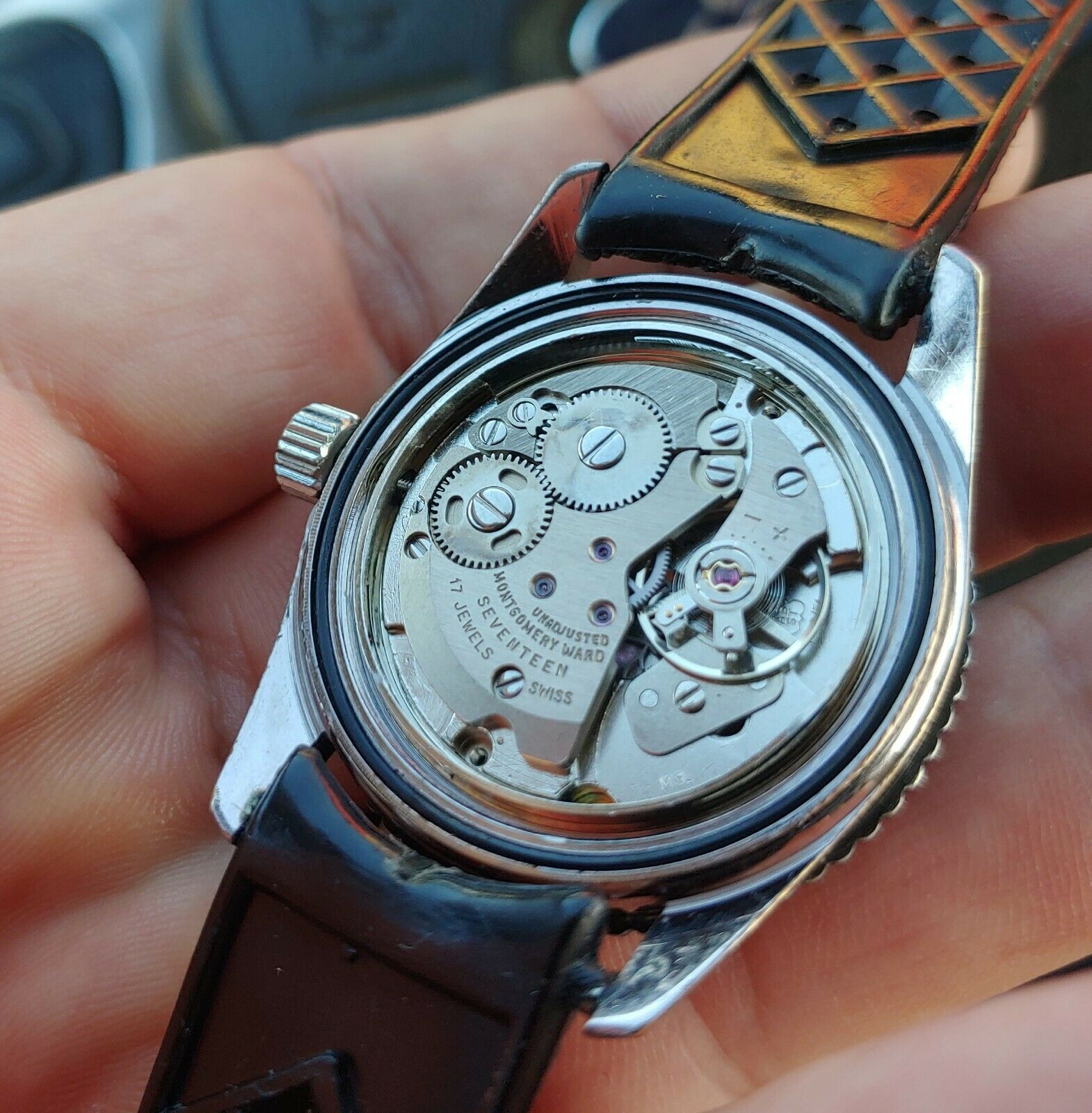
It turns out that Montgomery Ward, while not having any watches branded under their own store name (as far as I could find), sold a number of very sharp looking and interesting sport watches, particularly divers and chronographs in the 1960’s and 70’s (though, by the ’70s, they were also transitioning into electronic versions of some of these). In addition to LeGant, they also sold dive watches, chronographs, and world timers from Clinton, Wolbrook, Dorset and, one of my favorite “poor man’s” brands (which I wrote about previously HERE /https://twobrokewatchsnobs.com/lejour-chronograph-7733-the-poor-smart-mans-chronographe-du-jour/) LeJour, a brand perhaps best known as the American importer for Yema. Some of these watches, along with my LeGant skin diver, can be seen on a page from Montgomery Ward’s 1968 Christmas catalog.
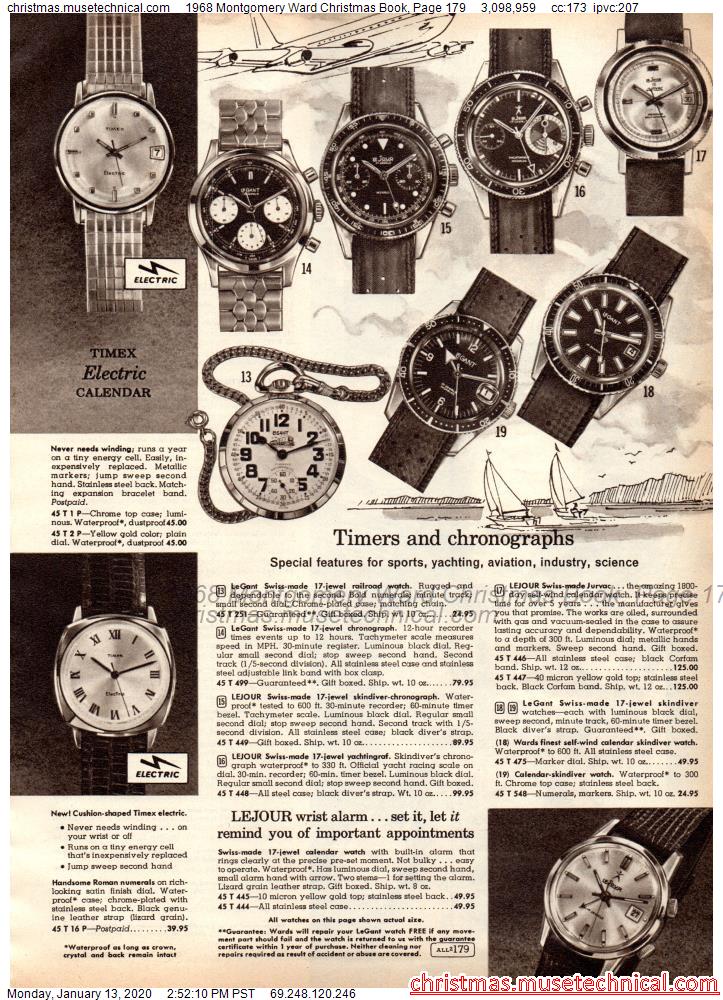
As of the writing of this article, Wards has only a small handful of watches listed on their website: several gaudy, novelty watches, none to write home about.
JC Penney
JC Penney is the third ubiquitous, catch-all department store/catalog company that I thought was worth a mention. While I had not initially planned on writing much about JC Penney, as I had not come across much in the way of their store watches, I was spurred on by a conversation with TBWS contributor Mike Razak (@mikesgotwatches on IG) who actually owns a JC Penney-connected, uh, dive watch I guess? The watch is a Towncraft and, from what Mike told me, was made for JC Penney in the way LeGant was made for Montgomery Ward (you see where I’m going here?). This particular Towncraft (JC Penney sold many different watches under this name from dress to sport styles) is definitely one of the more interesting of these vintage store-brand pieces I’ve seen and, what Mike called “a very confusing watch.” It has a dive bezel. It has BOTH a central second hand and a seconds sub-register. It has the word “water” on the dial but with no context for it. Confusing indeed. But also quirky, interesting and, as with the abovementioned watches, indicative of a particular era in department store merchandising.
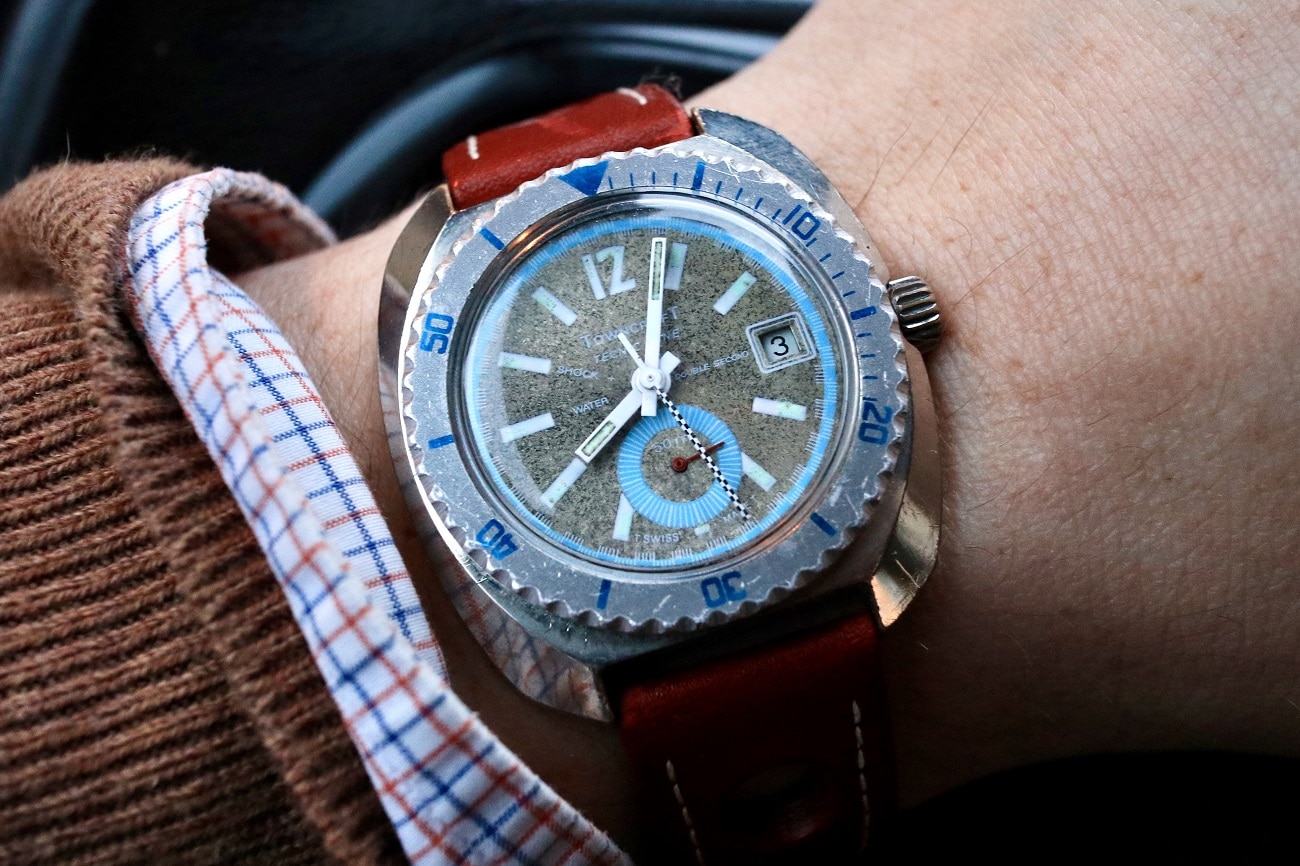
Aside from Towncraft, you could have found the usual suspects being sold at Montgomery Ward: Timex, Buren, Bulova, etc. However, in my online travels, I also found another brand not only sold by JC Penney but one of the first examples of a store brand/collaboration watch. Searching for JC Penney watches on Google, I came across a 10K gold Benrus watch (Benrus of military-issue fame and Steve McQueen lore) which, on its dial, was branded “Penney’s Benrus.” I know a little about the Benrus company, but I had never seen this piece. I found it interesting because, while other stores only developed their own watches to sell alongside those of other brands, this was the first instance of a collaboration with an established company. This had been done with Tiffany and Türler, for instance, with Rolex and Patek Phillippe, but these stores were already jewelers. I had not seen a department store co-branded watch before this example. They might be out there (and feel free to let me know in the comments below), but I haven’t seen another like this.

What’s most interesting about this, and why I chose to talk about JC Penney last, is that the Penney’s Benrus is prescient of what was to come in terms of store watches up to the present day.
Store Watches as Collaborative Efforts
So what is the state of store watches today? Well, as mentioned earlier, that might depend on what you associate as a watch that you would find at a department store (or on their website). If you focus on fashion watches then there are a handful of brands or styles that you could probably rattle off. However, what has come of actual store-branded watches? Are they gone? Well, not completely.
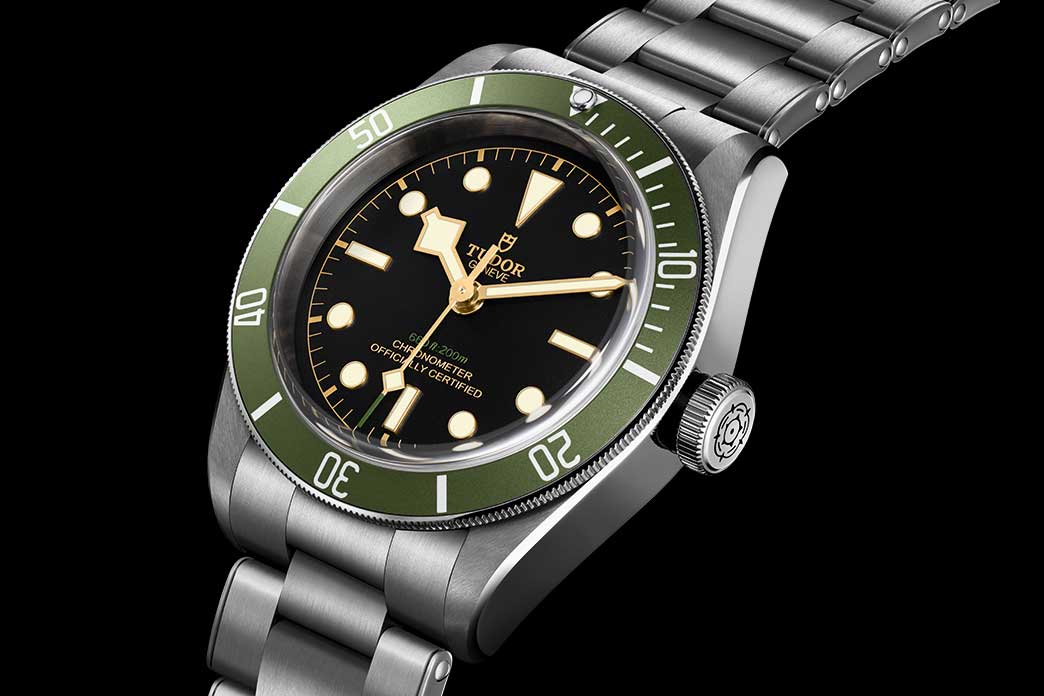
While the great (or not so great these days) department store chains may not be creating their own brands to sell in-store, some are certainly taking advantage of collaborations with revered brands, having said brands create special, limited edition watches for them. An earlier collaboration of note would be LL Bean’s partnership with Hamilton to create field watches with co-branded dials.
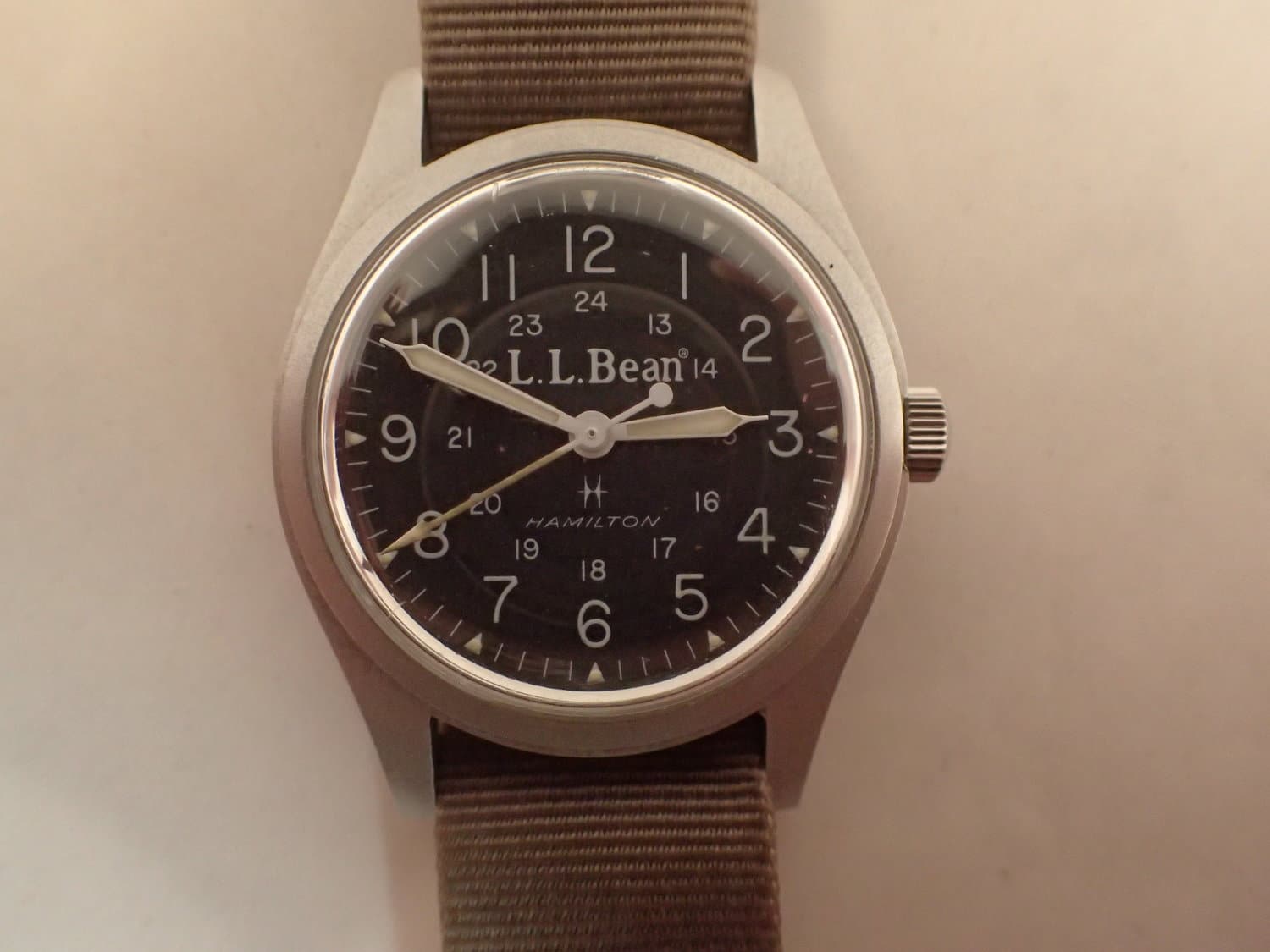
These started with mechanical movement watches and later moved into quartz pieces. They have even become sought after by collectors, particularly the earlier versions (Hamilton also partnered with Orvis and Brookstone to create field watches). At the risk of going off the deep end, perhaps it would be most effective to just list some of the store brand/collaboration watches that exist today. Below is a short list of brands and the stores they’ve collaborated with:
• Tudor x Harrods (special edition Black Bay Green)
• Bulova x Macy’s (limited edition versions of models created for Macy’s: American Clipper, Computron, military hack watch, and various chronographs)
• Seiko x Macy’s (limited edition Seiko 5 Sports dive-style watch created for Macy’s)
• Hamilton/Seiko/Timex/Casio/Citizen/Benrus x Beams (various models and collaborations of iconic watches from the aforementioned brands)
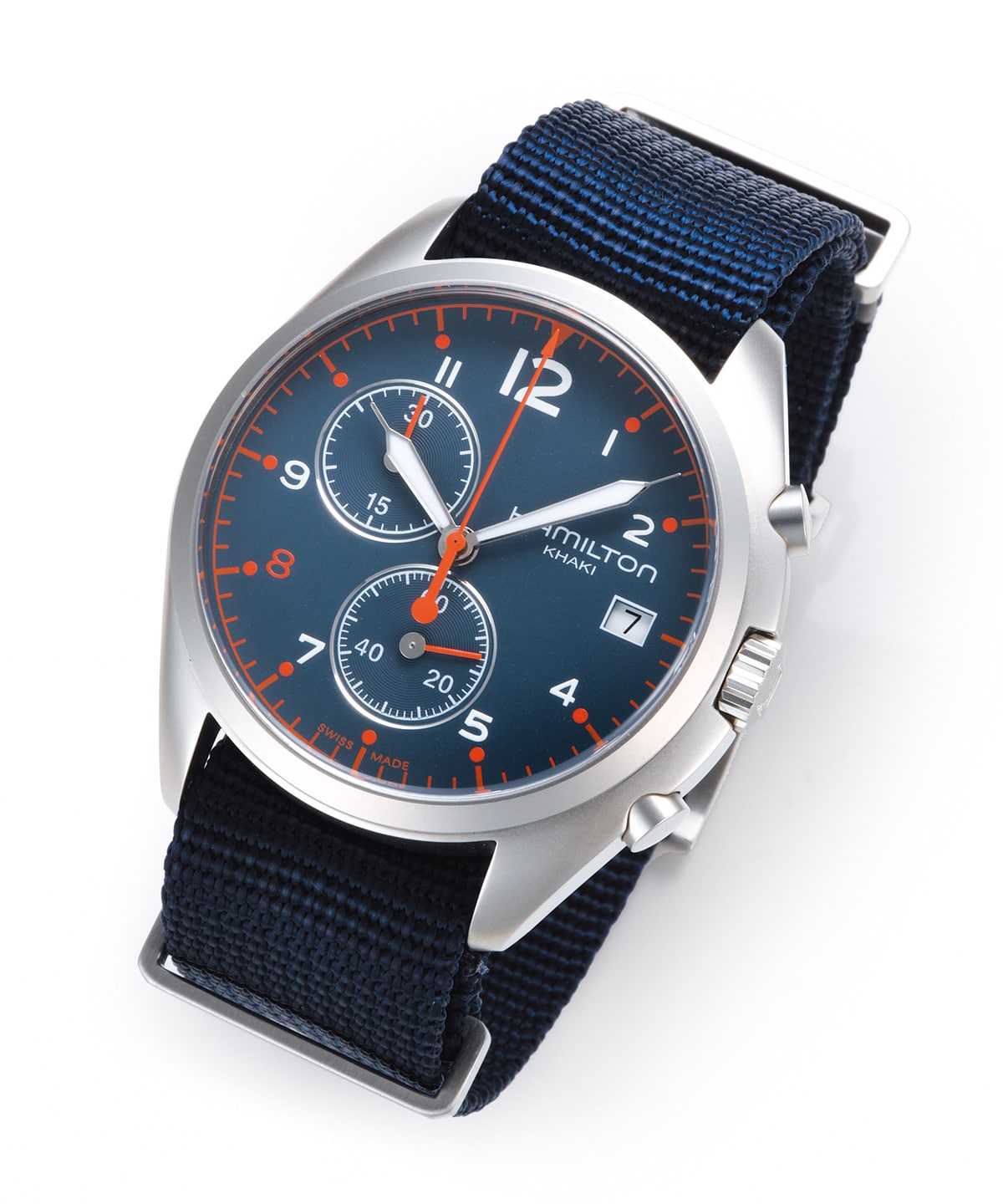
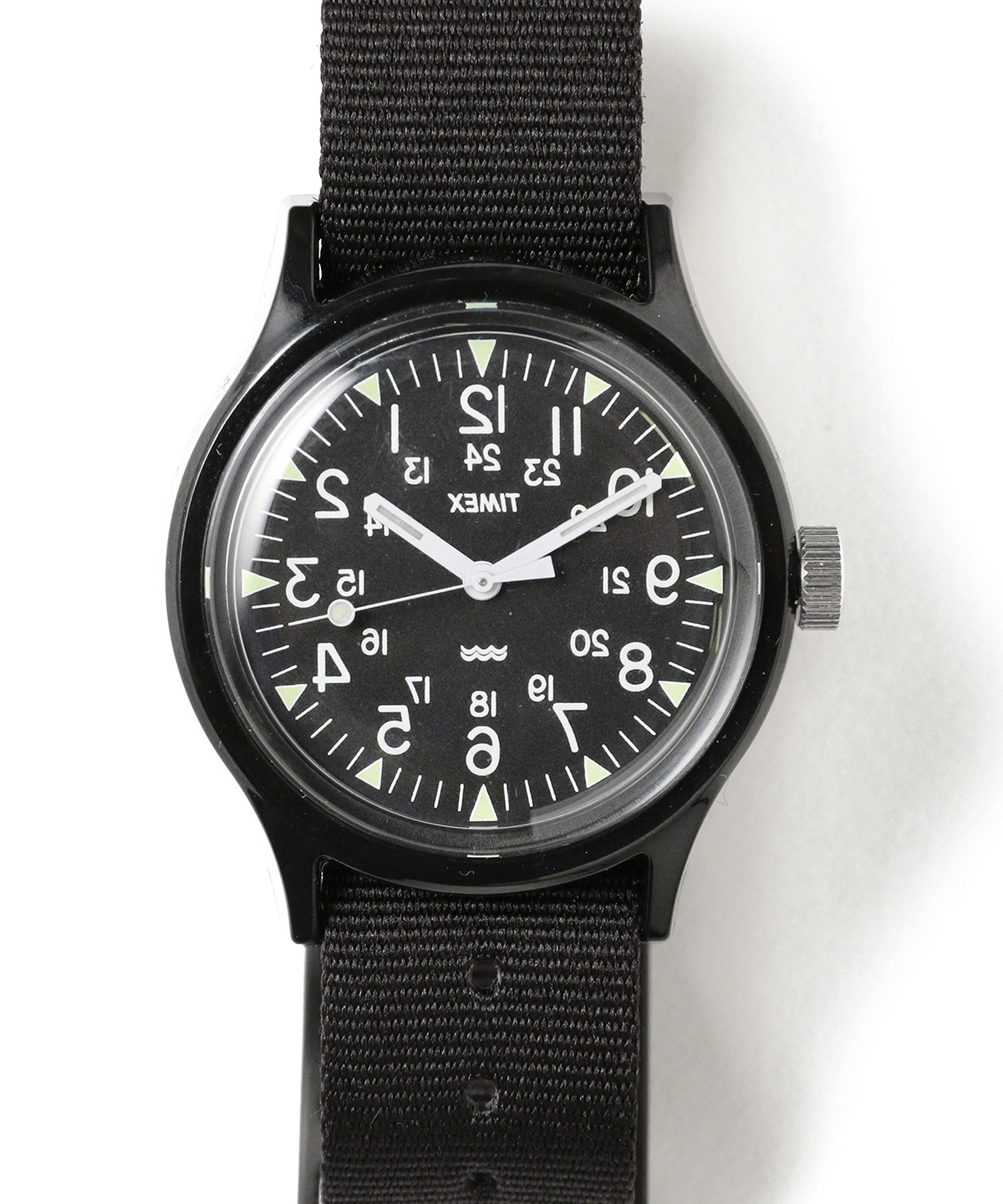
Looking at the state of store watches today it makes perfect sense that many of these long-existing chains have gone the route of collaboration. In a time when new online businesses are rapidly engulfing the lion’s share of retail space and established brick and mortar stores with a legacy are fading from our collective memory (especially the memory of those who did not experience brick and mortar retail as a preferred or only option in their lifetimes), partnering with manufacturers whose products can transcend the idea of “store” seems to be the only way up and out. Who’s to say that this relationship isn’t more co-dependent than I’m painting it?
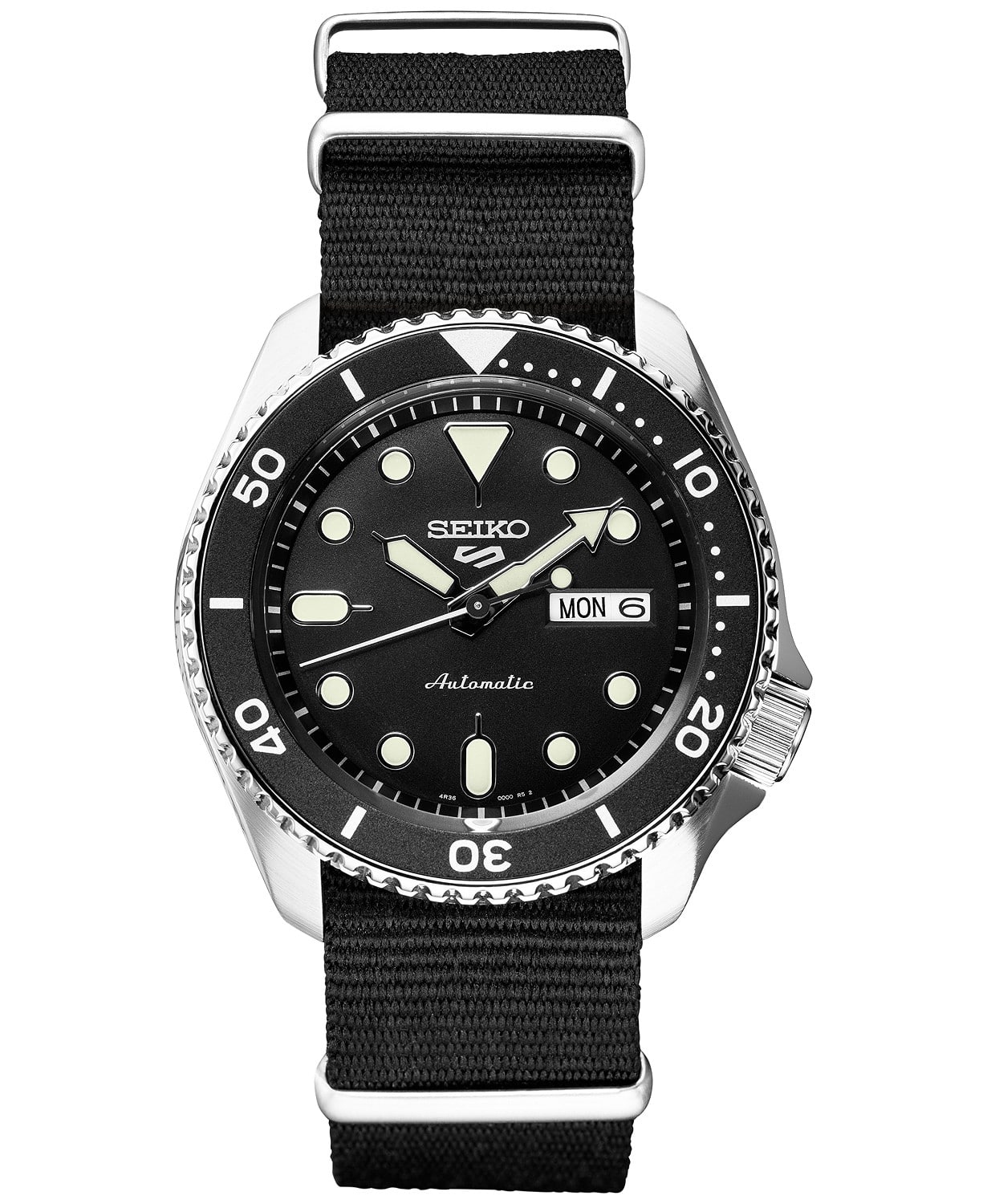
But when Macy’s, as I was recently informed of in a promotional e-mail, a chain store that has seen closing after closing in the current retail climate, has started selling pre-owned Rolexes, it seems that the heyday of store brand watches, and “stores” (as we once called them), is ticking away its last seconds.

Henry is a scholarly watch nerd based out of northern New Jersey. He works as a professor of composition and creative writing by day and a fiction writer by night. Both his academic and creative work have given him insight on design and rhetoric and his fiction writing background influences his humorous, narrative take on watch reviews. His watch collecting habits tend to lean toward vintage, but he never shies away from unique and interesting new pieces. Henry is also an avid musician, record collector, whiskey aficionado, serial hobbyist, and all-around enthusiast.
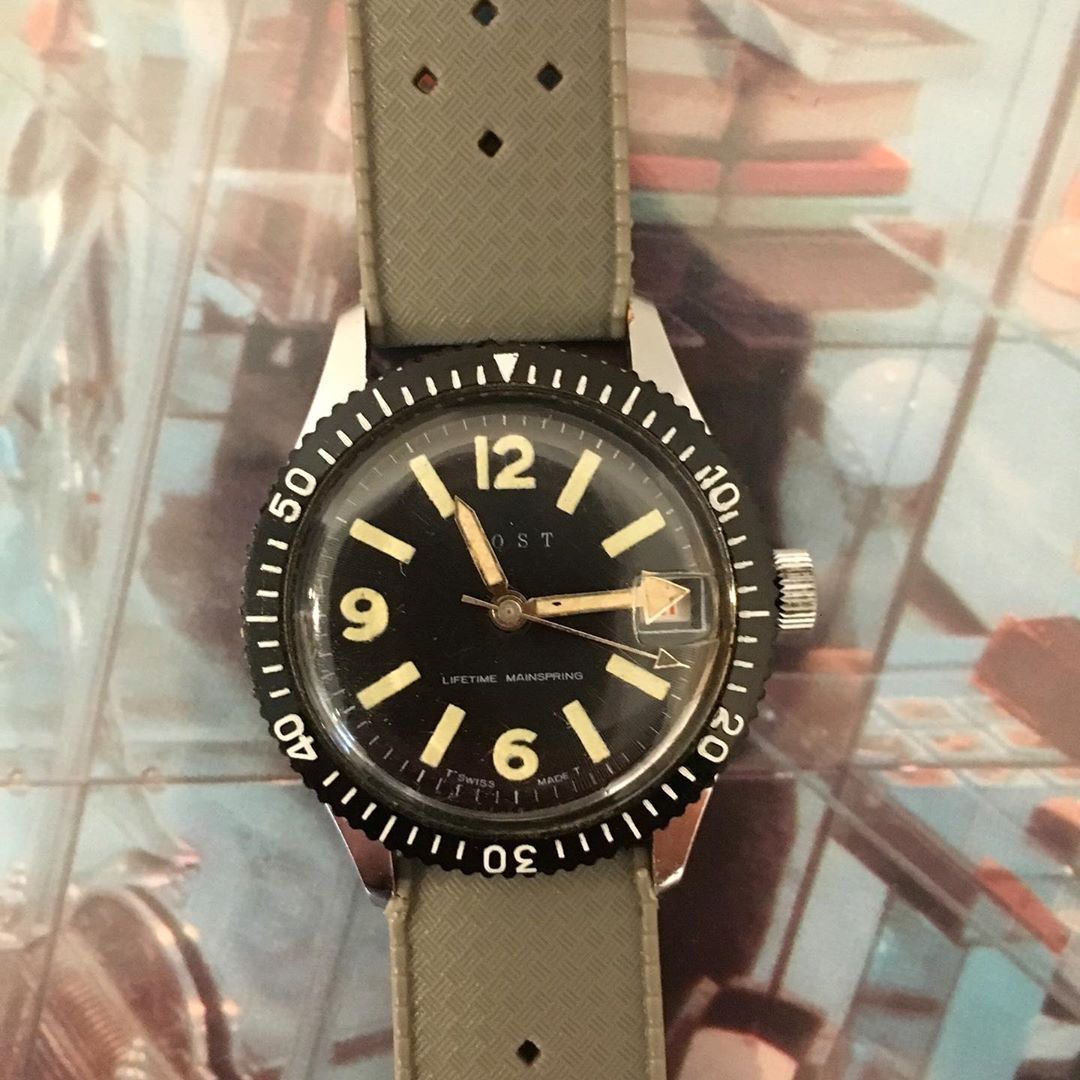
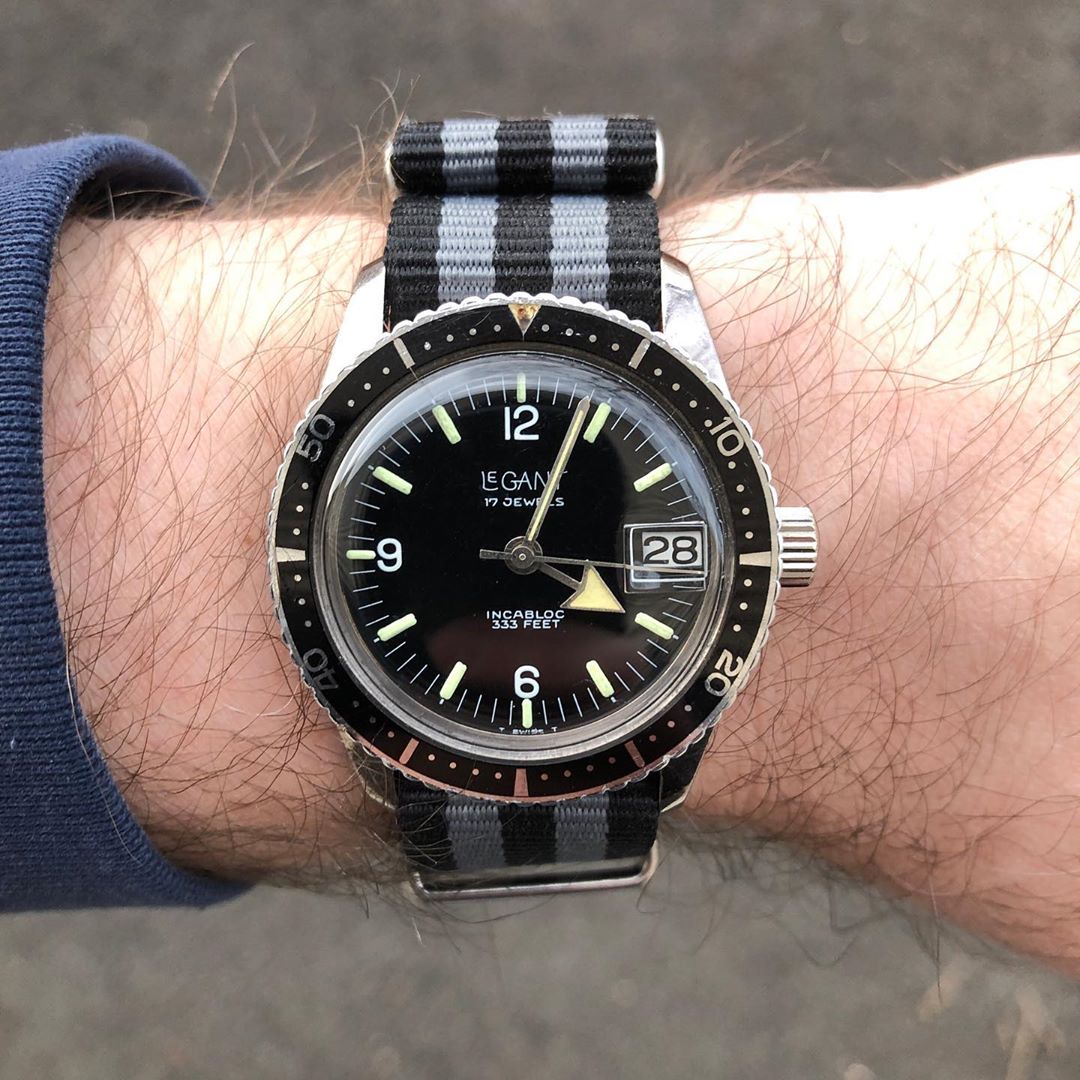
Thanks SO MUCH for a great article! I am the proud owner of a Dorset automatic 17j skindiver but, for the life of me, I can’t figure who made the Montgomery Ward co-branded movement. You can see good pix of the movement here:
Any ideas? LMK. Cheers, Noah
I have a Dorset skin diver watch too!!
Nice article and good history. It’s probably worth noting that J.Crew has partnered with Timex and has just released a collab watch done by Marathon. The Marathon watch is a tweaked version (case color and dial mod) of a watch that is a delivered-to-the-military product. And it has a (subtle) J.Crew stamp on the case back. J.Crew isn’t a department store, but they do have a mall presence…
I was able to secure a beautiful Penney’s Benrus this year. So now you are aware of at least two (though I have seen some women’s Penney’s Benrus pieces on eBay). I do not see that I can attach a photo here so I refer you to my instagram @blancepear
Cool read, thanks.
I have an old Carlisle dive watch from the 60s. I love it but know little except that the Ohio Carlisle Dept store sold them. I should open to see if an A. Schild.
I recently received an old sears phasar digital watch